Child and Pet Safety with Space Heaters: Essential Tips and Precautions
As winter approaches and temperatures drop, you may be considering the use of space heaters to provide additional warmth in your home. While space heaters can be a convenient and cost-effective solution to heating specific areas, it’s essential to prioritize the safety of both your children and pets.
There are several safety precautions you should follow when using space heaters in a household with kids and pets. One important safety measure is ensuring the heater is placed on a hard, level, and nonflammable surface at least three feet away from any combustible materials like curtains, furniture, or bedding.
Choosing a space heater with built-in safety features can also help protect your children and pets from potential hazards. For example, opting for a heater with safety certifications like UL and ETL, as well as models with tip-over protection and automatic shut-off, can significantly reduce the risk of accidents or fires in your home.
Child Safety and Space Heaters
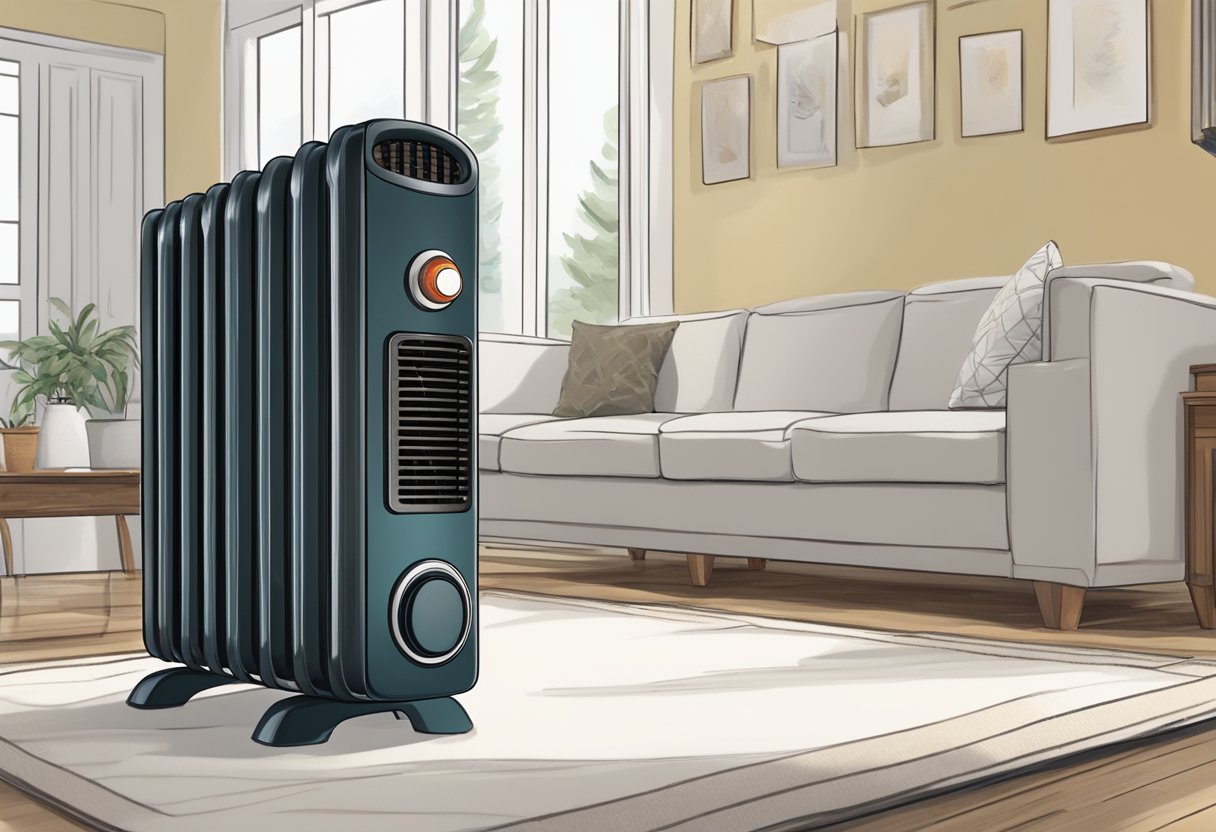
Understanding a Child’s Perspective
When considering the safe use of space heaters in a home with children, it’s important to understand a child’s perspective. Kids are naturally curious and may not fully comprehend the dangers associated with heaters.
They might touch, play with, or accidentally knock over a space heater, posing potential risks. To minimize these hazards, extra precautions are necessary.
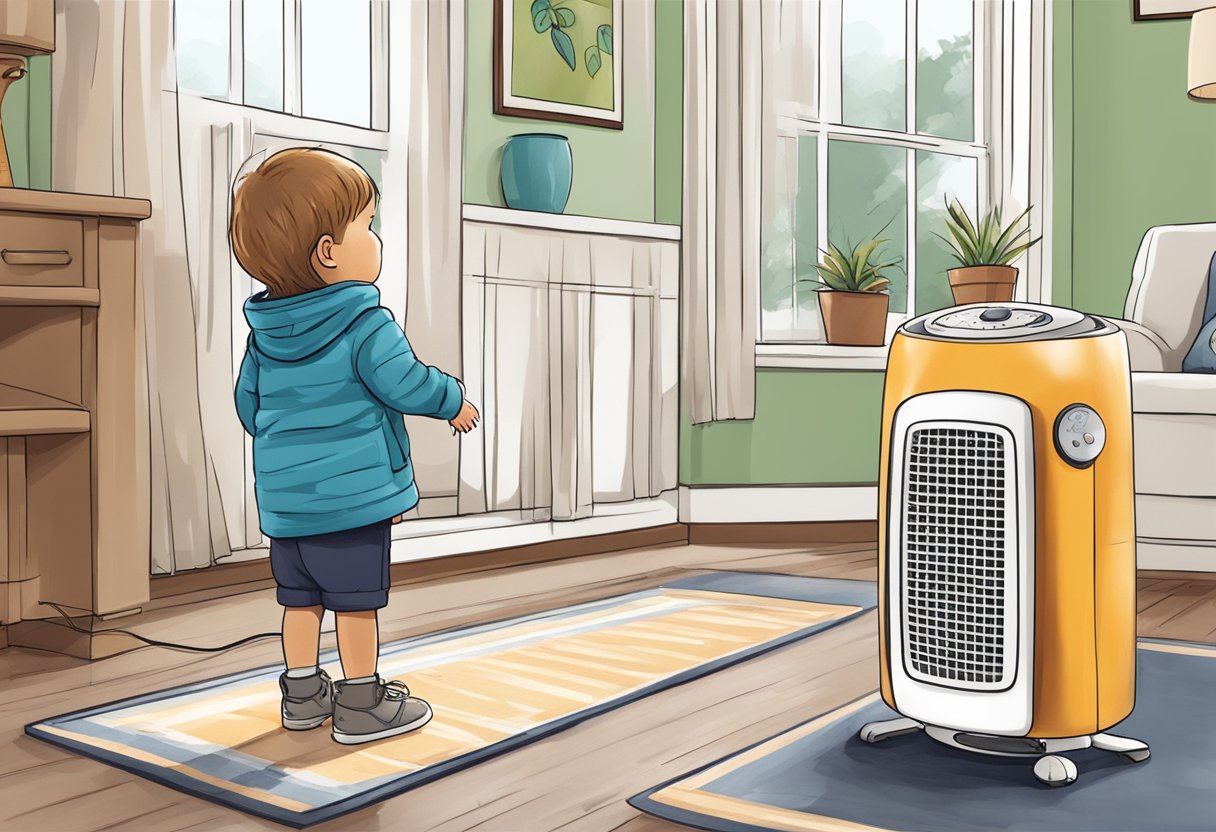
Key Safety Guidelines for Children with Space Heaters
Follow these safety guidelines to keep children safe while using space heaters:
- Choose a space heater with safety certifications: Look for heaters with safety certifications like UL or ETL, which indicate that the product has been tested for safety and complies with relevant standards.
- Select a heater with tip-over protection: Heaters with tip-over protection automatically turn off when they’re accidentally knocked over, reducing the risk of fire.
- Keep a safe distance: Place the space heater at least three feet away from flammable objects, such as curtains, bedding, and clothes. This distance also helps prevent children from getting too close.
- Use a secure, flat surface: Position the heater on a stable, level surface where it’s less likely to be knocked over by children or pets.
- Avoid using heaters in the bathroom: Due to the presence of water, it’s unsafe to use space heaters in the bathroom, where children may accidentally splash water on the heating unit.
- Teach children about heater safety: Explain to your children the dangers and safety concerns associated with space heaters, and make sure they understand not to touch or play with them.
By following these key safety guidelines, you can create a safer environment for your children when using space heaters in your home.
Remember: safety should always be your top priority when it comes to keeping your family warm and protected.
Pet Safety and Space Heaters
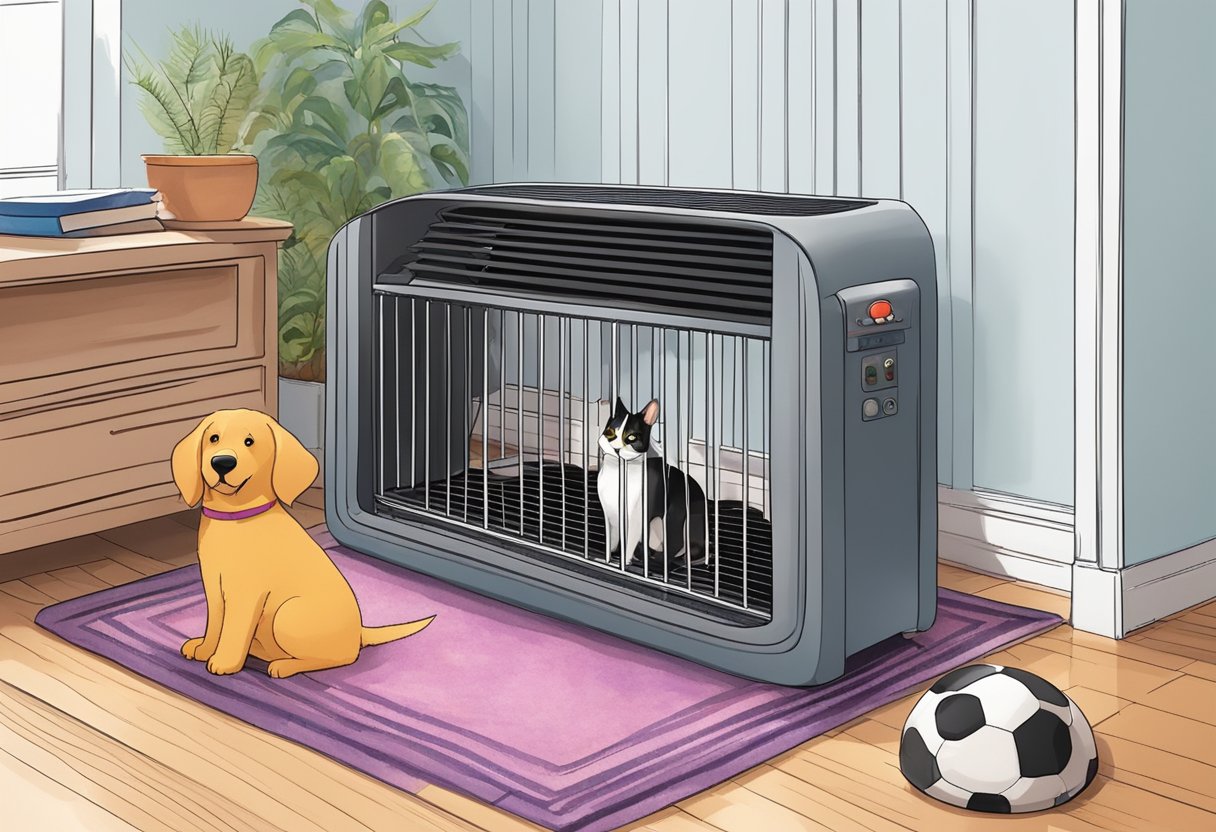
Understanding Pets’ Behavior
Pets are naturally curious creatures, and their inquisitive behaviors can pose risks around space heaters. They may accidentally bump into, knock over, or investigate the heater with their paws or noses.
Burning and injuries may occur if they get too close. Pet owners should be mindful of their pets’ actions around a space heater and look for pet-friendly space heaters specifically designed to minimize such risks.
Key Safety Measures for Pets with Space Heaters
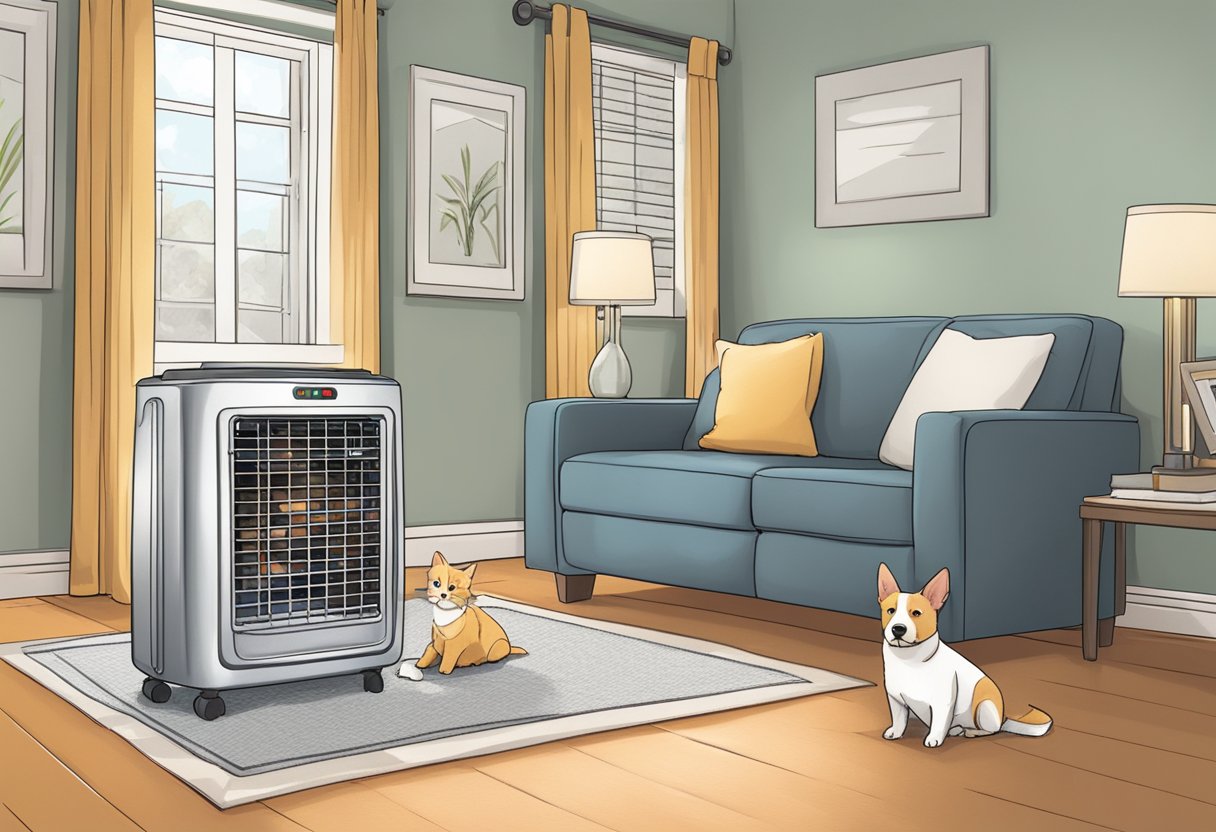
To ensure your pets stay safe around space heaters, follow these safety tips:
- Choose pet-friendly space heaters: Look for models with built-in safety features such as tip-over protection and cool-touch exteriors.
- Placement: Keep the space heater on a flat, stable surface away from high-traffic areas to minimize the chances of pets knocking it over.
- Establish a pet-free zone: Create a barrier around the space heater, using a baby gate or pet playpen, to prevent pets from getting too close.
- Monitor pets closely: Always supervise your pets when the space heater is in use. If you must leave the area, turn off the heater or take your pets with you.
- Unplug when not in use: To avoid any accidents caused by unsupervised pets, unplug the space heater when you’re not using it.
Following these safety precautions will help protect your pets and keep them safe around space heaters. Remember to always be attentive and choose the best pet-friendly space heaters appropriate for your specific requirements.
General Safety Risks Associated with Space Heaters
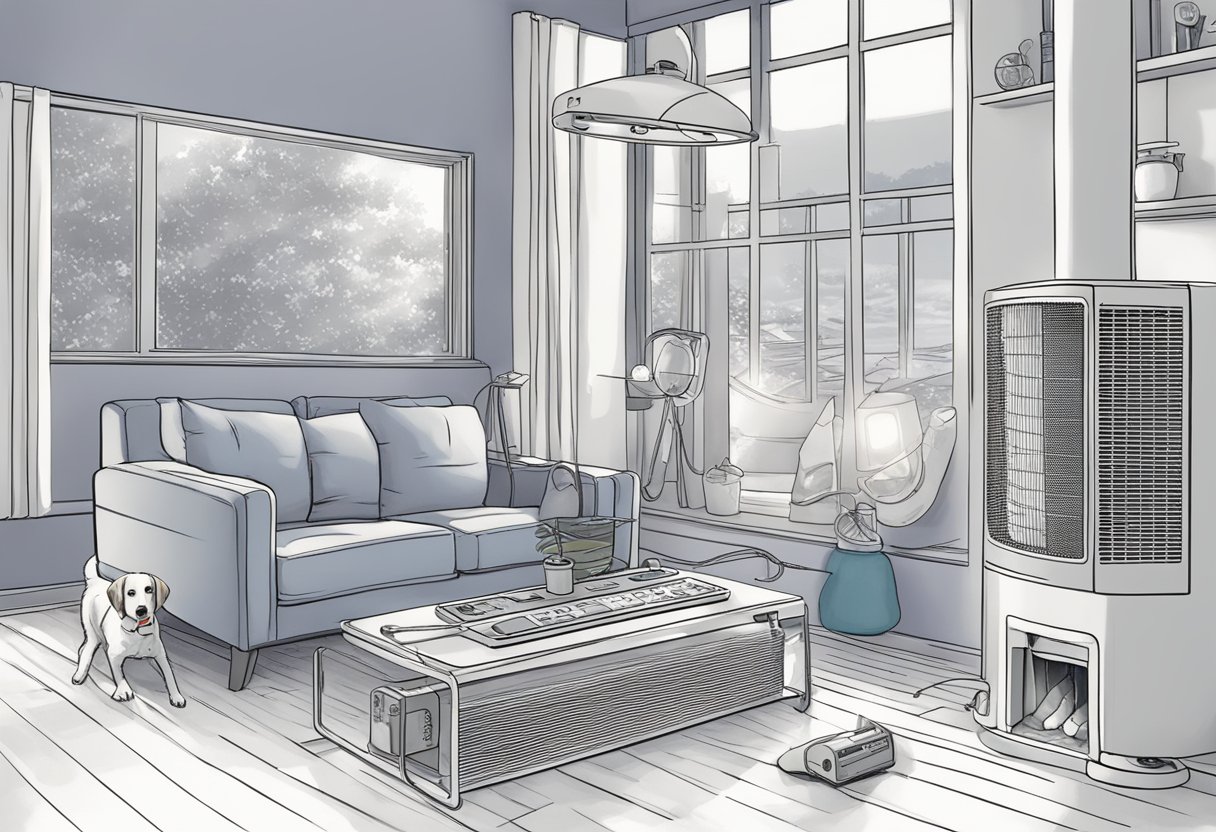
Space heaters can be a convenient way to provide supplemental heat in your home, workshop, or garage.
However, they also pose potential safety risks, including house fires, carbon monoxide poisoning, and burns from direct contact.
House Fires
- According to the National Fire Protection Association (NFPA), space heaters are responsible for a significant number of house fires each year.
- Keep combustible materials at least 3 feet away from the heater to prevent any fire risk.
- Make sure you have working smoke alarms installed throughout your home.
Carbon Monoxide Poisoning
- Gas-powered space heaters produce carbon monoxide, a colorless and odorless gas that can cause poisoning or even death.
- Always use the space heater in a well-ventilated area and install carbon monoxide detectors in your home.
Overheating Protection
- Look for space heaters with built-in overheating protection.
- Ensure your space heater has safety certification labels, indicating the product complies with safety standards.
- Perform regular safety checks, such as tip-over tests and drape tests, to ensure your space heater operates safely.
Placement and Stability
- Keep your space heater on a flat, nonflammable surface to avoid tipping over.
- Choose space heaters with a tip-over switch, which automatically turns off the heater if it falls or tips over.
- Avoid high traffic areas or hallways to prevent children, pets, or anyone from accidentally knocking the heater over.
By following these guidelines and precautions, you can ensure the safe use of space heaters in your home.
Features to Look For in a Safe Space Heater
When searching for a space heater that is safe for both children and pets, there are several features you should prioritize. These features can help prevent accidents and ensure the space heater operates efficiently.
Here’s a summary of features to prioritize when looking for a safe space heater:
- Safety certification (e.g., ETL or UL)
- Tip-over protection
- Overheat protection
- Cool-touch surface
- Closed grills
- Adjustable thermostat
- Programmable timer
- Remote control
- Sturdy cord
- GFCI plug
- Portability
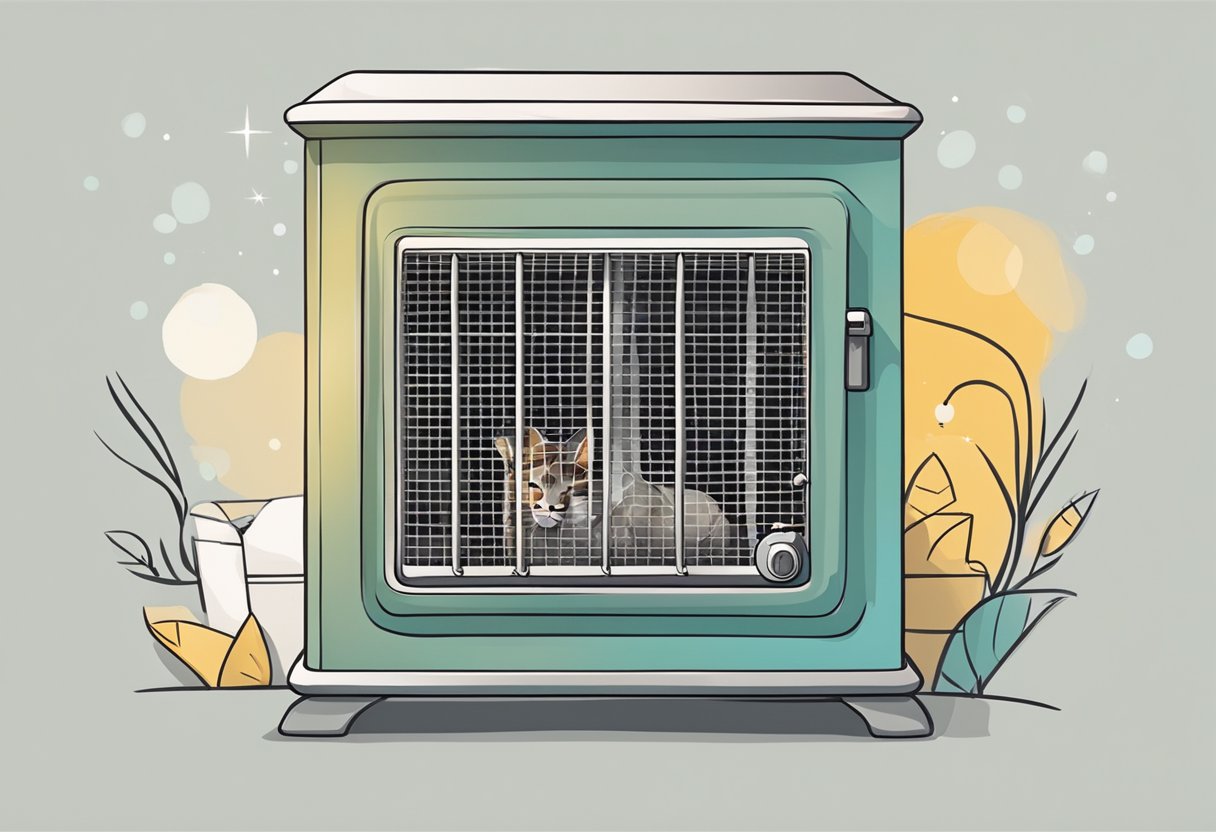
First and foremost, look for a safety certification such as ETL or UL. These certifications indicate that the space heater has been tested and meets safety standards. Additionally, pay attention to space heater ratings to find models recommended by experts and users alike.
Choose a heater with tip-over protection and overheat protection. These safety features automatically shut off the heater if it gets knocked over or overheats. Combined with a cool-touch surface and closed grills, these features make it less likely for pets or children to burn themselves.
Opt for a heater with an adjustable thermostat and a programmable timer. These features allow you to control the temperature and time the heater operates, reducing the risk of overheating. A remote control can provide added convenience while minimizing your contact with the heater.
Space heaters should have a sturdy cord and, if possible, a GFCI plug to prevent electrical issues. Additionally, consider the portability of the heater, make sure it has a handle or wheels for easy moving, and a compact design to fit in your desired area.
To minimize the risk of carbon monoxide poisoning, avoid using combustion-style space heaters indoors. Instead, stick to electric heaters, which are equipped with overheating protection or ceramic heaters with fully enclosed heating elements.
By considering these features, you can find a space heater that both effectively warms your space and ensures the safety of children and pets in your home.
Alternative Safe Heating Solutions for Kids and Pets
For those concerned about the safety implications of space heaters, there are several alternative solutions to consider.
- Central Heating Systems: This is the most common heating system for homes, and while it may have higher upfront costs, it offers even heat distribution. With vents and radiators usually out of reach for kids and pets, they present fewer risks.
- In-floor Radiant Heating: These systems use tubes of hot water or electrical wiring beneath the floor to heat spaces. The warmth radiates upward, warming the room evenly. It’s a hidden system, meaning no risk of burns for curious kids or pets. Plus, walking on a warm floor is a pleasant bonus!
- Heat Pumps: These devices extract heat from the outside (even when it’s cold) and pump it indoors. They can also be reversed in warmer months to act as air conditioners. Ductless mini-split heat pumps can be mounted high on walls, keeping them away from kids and pets.
- Micathermic Heaters: Micathermic space heaters are a type of convection heater that combines elements of both radiant and convection heating. They produce instant and evenly distributed heat, and they’re usually cool to the touch. This makes them safer around children and pets.
- Oil-Filled Radiators: These heaters use electricity to warm an enclosed oil, which then heats the room by radiating outwards. They’re silent and maintain warmth for a long time, even after being switched off. Their surfaces are warm but not so hot as to pose burn risks, making them safer for kids and pets.
- Wall-mounted Electric Panel Heaters: Sleek and slim, these panel space heaters can be mounted high up on walls, away from the reach of kids and pets. They warm the room efficiently, and because they’re mounted, the risk of being knocked over is eliminated.
- Fireplace: Whether you opt for a traditional wood-burning fireplace or a modern electric or gas one, fireplaces can be a great way to heat a space. However, always ensure a secure screen or barrier is in place to keep kids and pets at a safe distance.
- Heated Blankets and Mats: For pet owners, specially designed heated pet mats or beds can provide localized warmth. They’re designed with pet safety in mind, ensuring they don’t get too hot. Similarly, electric blankets for kids have multiple safety features and auto-shutoff mechanisms.
- Draft Stoppers and Insulation: While not a direct heating solution, preventing cold air from entering your home and insulating it properly can reduce the need for additional heating. Door draft stoppers, window insulation film, and proper wall and attic insulation can go a long way in keeping your home warm.
Safety Precautions:
- Whichever alternative heating solution you choose, always ensure the device’s cords are out of reach from children and pets to prevent tripping or chewing hazards.
- Regular maintenance checks are crucial to ensure the heating systems work efficiently and safely.
- Always educate kids about the importance of staying away from heating sources and monitor pets when introducing any new heating solution.
Conclusion
While the convenience of space heaters is undeniable, their potential risks, especially in homes with children and pets, can’t be overlooked. Fortunately, a plethora of alternative heating solutions exists that prioritize both efficiency and safety.
By thoughtfully selecting and implementing these alternatives, families can enjoy the cozy embrace of warmth without the looming shadow of potential hazards.
As with any household device, it’s always essential to practice due diligence, ensuring installations are secure and regular maintenance checks are conducted. Warmth, after all, is best enjoyed with peace of mind.
Check Out Our Complete Guide to Space Heaters!
If you enjoyed this post, check out our complete guide to space heaters for more information on space heater types, safety features, troubleshooting common issues, and how to choose the right space heater for your needs!
Let Us Know How We’re Doing!
Did this expertly prepared resource answer your question?
Do you have another question about home maintenance, home improvement projects, home appliance repair, or something else?
Get more information, send in questions and keep the discussion going by contacting the I’ll Just Fix It Myself company customer service team at at 1-800-928-1490 or Email us at [email protected]
